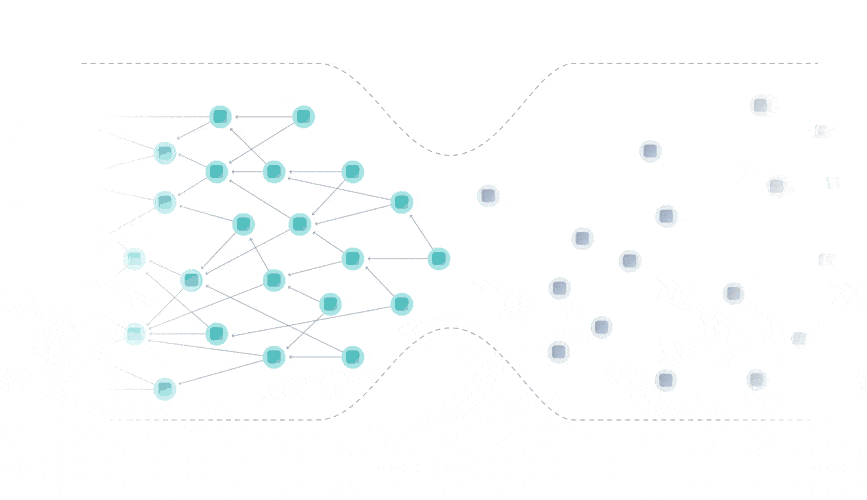Finality—Part 4: Many Worlds
"With this simple modification to triple-entry bookkeeping, validators can vote explicitly to resolve any number of conflicting realities with near-perfect theoretical efficiency."
Finality is a four-part exploration into the inner workings and technological significance of the IOTA tangle’s many-worlds Nakamoto consensus mechanism. Visit wiki.iota.org to learn more about the IOTA tangle, or click below to continue reading the Finality series with:
📕 Part 1: Two Generals
📗 Part 2: Bookkeeping
📘 Part 3: Total Order
📙 Part 4: Many Worlds
Since the introduction of the classical Nakamoto consensus algorithm in 2008, many open-source projects have sought to overcome the limitations of blockchain-based consensus mechanisms as described by the blockchain trilemma.
That is, a blockchain cannot be simultaneously and completely secure, decentralized, and scalable: for any two attributes to be optimized, a third attribute must be compromised.
For example, if a blockchain-based consensus mechanism guarantees a network’s security and decentralization, the same consensus mechanism will inhibit the network from scaling to an unspecified number of validated messages per second.
Intuitively, however, a blockchain is nothing more than a special case of a directed acyclic graph where each connection on the graph references the previous connection on the graph for a total order of network events.
What’s more, the blockchain trilemma is a fundamental mischaracterization of what we’ll refer to here as the directed acyclic graph quadrilemma:
A directed acyclic graph cannot be simultaneously and completely secure, decentralized, and scalable with a total order of network events: for security, decentralization, and scalability to be optimized, the absolute perception of time must be compromised.
Only by relaxing the total order of network events can Bitcoin’s classical Nakamoto consensus on a chain of blocks become IOTA’s many-worlds Nakamoto consensus on a tangle of messages with multiple references.
But how can a Nakamoto-style consensus achieve finality on a directed acyclic graph without an absolute perception of network events? Isn’t a chain of blocks essential for securing permissionless networks with an unspecified number of anonymous validators?
Voting
Despite its revolutionary advantages, the economic frictions and throughput limitations of classical Nakamoto consensus have lead many forward-thinking critics to question the long-term viability of blockchain-based consensus mechanisms.
As it turns out, by enabling validators to entertain any number of conflicting realities with a quadruple-entry ledger, the gossip protocol can be used to reliably distribute messages and opinions to all validators in a network.
With this simple modification to triple-entry bookkeeping, validators can vote explicitly to resolve any number of conflicting realities with near-perfect theoretical efficiency.
For instance, imagine a permissionless network with an unspecified number of anonymous validators where all validators track their perceptions of reality with a quadruple-entry ledger.
If validator A sends conflicting messages to its peers, validator B and validator C, then validator B and validator C can easily forward the messages appended with their opinions to their other respective peers.
As long as all validators relay the messages appended with their opinions to their respective peers, the information will propagate through the network of any number of validators at an exponential rate.
Accordingly, all opinion weights on validator A’s conflicting messages can be accumulated by the validators in the network using their local quadruple-entry ledgers and a relative perception of network events.
Once one conflicting message reaches an appropriate grade of finality, such as a 67% of the network’s scarce resources, all other conflicting informational states collapse into a single, solid reality by a majority approval weight.
Consequently, validator extractable value is removed and the block size is reduced to one message with multiple references, resulting in a leaderless consensus where the heaviest tangle always wins.
Although many worlds may exist simultaneously at any given time, adversaries not following the rules will always succumb to the heaviest tangle followed by all honest validators.
In addition, the quadruple-entry ledger is a conflict-free replicated data type with a negligible probability of agreement failure and an average time to finality of a few seconds.
But what types of Sybil protection mechanisms are compatible with a gossip-based voting protocol and a quadruple-entry ledger? Isn’t computation power essential to ensuring that the heaviest informational state always wins?
Trust
Unlike most blockchain-based consensus mechanisms, IOTA’s many-worlds Nakamoto consensus mechanism incorporates a scarcity abstraction called mana for Sybil protection.
As a quantifiable and game-theoretically secure proof of token ownership, mana is difficult for validators to obtain, easy for validators to lose, and impossible for validators to counterfeit.
In this way, validators can provably bind mana as an opinion weight on messages before gossiping the information to their respective peers.
For example, if 5% of the IOTA token supply is pledged as mana to validator A, then validator A will command an opinion weight of at least 5% of the IOTA network’s overall approval weight.
When a given message accumulates 67% of the network’s active consensus mana, the message is considered statistically irreversible by the heaviest reality wins principle.
In its totality, the IOTA tangle’s many-worlds Nakamoto consensus mechanism uses a gossip-based explicit voting protocol, a scarcity abstraction as a Sybil protection mechanism, and a quadruple-entry ledger as a bookkeeping data structure.
This novel combination of consensus components results in a secure, decentralized, and scalable solution to the blockchain trilemma without the adverse incentives and environmental impacts of validator extractable value.
The relative perception of network events is therefore not a bug but a feature, resulting in a trustworthy and feeless open infrastructure for any party wishing to participate.
Given its conceptual flexibility, the IOTA network may even one day evolve into a permissionless and secure distributed environment with a Sybil protection mechanism built on real world trust.
That, however, would be a different form of finality entirely—the beginnings of a true trust machine.
Click below to check out the official tangle visualizer, or visit wiki.iota.org to learn more about the IOTA tangle.
If you’re enjoying the Finality series, you may also be interested in checking out Layer One, a three-part philosophical journey into the emergence and implications of the IOTA distributed ledger technology and its parallel reality based data structure. Click below to read more.
📕 Part 1: Assimilation
📗 Part 2: Error Correction
📘 Part 3: Metamoney
🤘 Thank you for reading iologica—the blog that strives to challenge you.
✍️ The Finality series was written in large part based on the commentary of Hans Moog, which is publicly available on Twitter and Medium. Please also acknowledge Holger (Phylo) of the IOTA Foundation, unrecognized_User and Jeroen van den Hout of the IOTA Experience Teams, and John for providing valuable assistance in the creation of the Finality series.
👉 If you enjoyed reading this article, feel free to share it or subscribe below.
🤝 If you found the information in this article valuable, consider donating below to support the author’s future work.
IOTA: iota1qzgy3yx40s5ddnnzpxwjvwd9nzapl8dnrhv2l8rmcx9dr7jc54t7yt9zl4y
BTC: bc1qdj4ygj2daxtvn39jrr9lkesqrcuhk0mtpupemk
ETH: 0x48F80b4bfFC6E32C6458277e9BBaD5A8B6eE8C2d
🤙 If you want to get in touch, contact the author below.
Twitter: @rbrennankelly
Email: rbrennankelly@gmail.com
The Content of this article is provided for informational purposes only, you should not construe any such information or other material as legal, tax, investment, financial, or other advice. The Content is not to be construed as a recommendation or solicitation to buy or sell any security, financial product, instrument, or to participate in any particular trading strategy.





